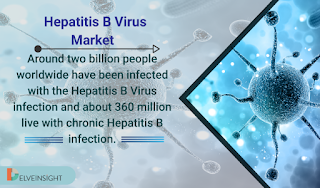Tenosynovial Giant Cell Tumors (TSGCTs) Market Research Report 2030 | Tenosynovial Giant Cell Tumors (TSGCTs) Market
Tenosynovial Giant Cell Tumors are a type of neoplasm that affects synovial-lined tendon sheaths, synovial joints, and surrounding soft tissue. Locally aggressive benign tissue lesions are defined by synovial lining inflammation in joints and tendons. Overexpression of the colony-stimulating factor 1 receptor is thought to cause these tumors to form. Giant cell tumors of the tendon sheath (GCTTS), pigmented villonodular tumors (PVNTS), extra-articular pigmented villonodular tumors of the tendon sheath, and localized or focal nodular synovitis are all terms used to describe TSGCTs.

Tenosynovial Giant Cell Tumors Causes
Translocation is an alteration to a chromosome that causes Tenosynovial Giant Cell Tumors. A chromosome segment breaks off and moves around. The cause of these translocations is unknown. The genetic code for making proteins is stored on chromosomes. A protein termed colony-stimulating factor 1 is produced in excess due to the translocation (CSF1). This protein attracts cells with CSF1 receptors on their surfaces, such as macrophages, white blood cells. These cells cluster together until they form a tumor.
Tenosynovial Giant Cell Tumors Sign and Symptoms
Tenosynovial Giant Cell Tumors symptoms and signs vary based on the particular area implicated and the subtype present. Pain and swelling of the afflicted joint are frequently the first signs. Joint stiffness is also a possibility. These symptoms usually appear gradually.
Tenosynovial Giant Cell Tumors Epidemiology
Giant cell tumors can be found in various organs across the body, including the knee, ankle, hip, and other areas, depending on the development pattern, which can be localized or diffused.
According to Delveinsight, the tumor location of diffuse tenosynovial giant cell tumors (D-TSGCTs) is highest in the knee, with approximately 791 cases reported in 2017 in the United States. This number is expected to rise throughout the forecast period.
Tenosynovial Giant Cell Tumors Treatment
Surgical resection is the current standard of treatment for Tenosynovial Giant Cell Tumors. The most common treatment for localized-type TGCT is the immediate removal of the tumor nodule. Diffuse-type tenosynovial giant cell tumor is typically observed as larger tumors affecting large joints. As a result, care of these tumors is more complex and frequently entails total synovectomy, joint replacement, or, in scarce situations, amputation. Radiation therapy, radiosynovectomy, and systemic therapies are possible treatments (CSF1 inhibitors and Tyrosine Kinase Inhibitors).
Tenosynovial Giant Cell Tumors Market
In the forecast period (2021–2030), major drivers such as expanding Incident population, technological advances, and emerging medicines are projected to drive the Tenosynovial Giant Cell Tumors (TSGCTs) therapeutics market.
Prospective treatments for Tenosynovial Giant Cell Tumors (TSGCTs) are under late-stage development and soon be available. Key players such as Daiichi Sankyo, Five Prime Therapeutics, Novartis, Deciphera Pharmaceuticals, and AmMax Bio were involved in developing therapies that can drive the tenosynovial giant cell tumors market in the upcoming years.
Nilotinib and AMB-05X are in the early stages of development, whereas Lacnotuzumab has completed phase II clinical trials. Cabiralizumab has also passed phase I/II clinical trials, whereas DCC-3014 is still in the early stages.

Comments
Post a Comment